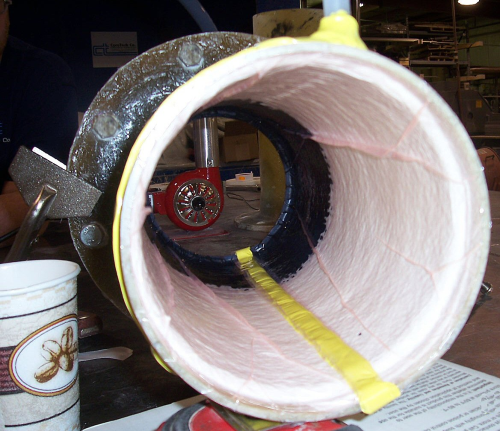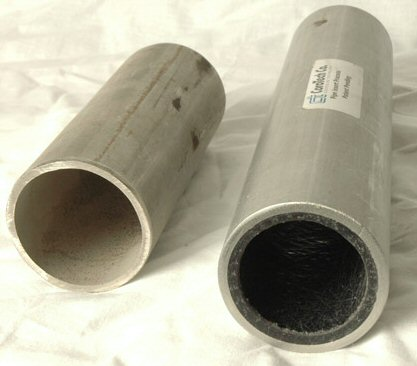

The developer of the system, Michigan, USA-based CoroTech, maintains that, compared to existing methods, the process is lower in cost, faster to apply and has a wider application range in terms of the size or diameter of the pipe work or tanks. In addition, as the process is based on resin infusion moulding, the risk of personnel coming into contact with uncured resins and volatile organic compounds (VOCs) is reduced substantially.
Although the process can be used for new installations, CoroTech expects it to be of particular interest to companies who need to prolong the life of existing metal, ceramic and polymer pipe work or tanks. In the case of new installations, CoroTech claims that the process can lead to substantial savings by eliminating the need to use high cost alloys.
The first stage of the process is for CoroTech engineers to design a laminate that will meet the specific ‘in service’ requirements of the application. Usually this is based on three criteria: the specified level of corrosion resistance, the amount of abrasion protection required and whether the resultant lining will have a structural or non-structural role.
With the laminate agreed, an appropriate surface primer is applied to the existing pipe work and a pre-formed tube of dry glass fibre is fitted followed by a vacuum bag that is sealed at each end. Once a vacuum line is attached to one end of the pipe and a resin inlet hose is fitted to the other end, the actual infusion process can commence.
The infusion route was chosen because it works well in a 360° cylinder, enables high fibre fractions to be achieved and allows a wide range of resin systems to be used including polyester, vinyl ester and epoxy. According to CoroTech, the process can be used for pipe diameters down to 50 mm. In principle there is no upper size limit as the process can be applied in manageable sections.
At the present time CoroTech is the sole installer of the process but will consider licensing the technology to third parties. Currently, a patent covering the process is pending with the US Patent Office.
Founded in 1973, CoroTech is a full-service corrosion lining company specialising in the engineering, construction, manufacturing and field services of lining systems for power generation, pulp and paper and other industries that require corrosion-resistant tanks and linings.



